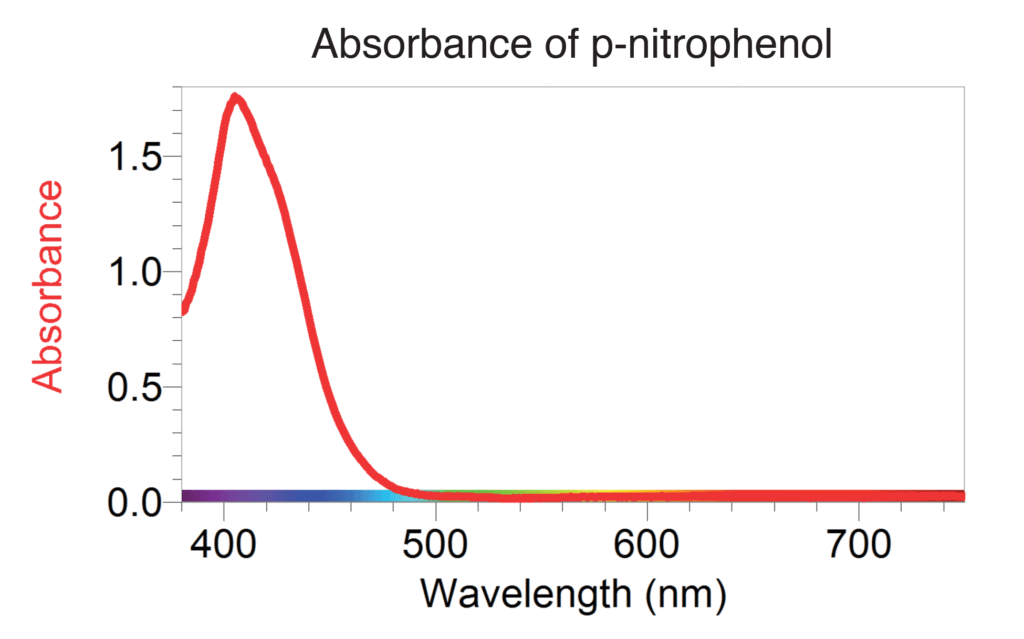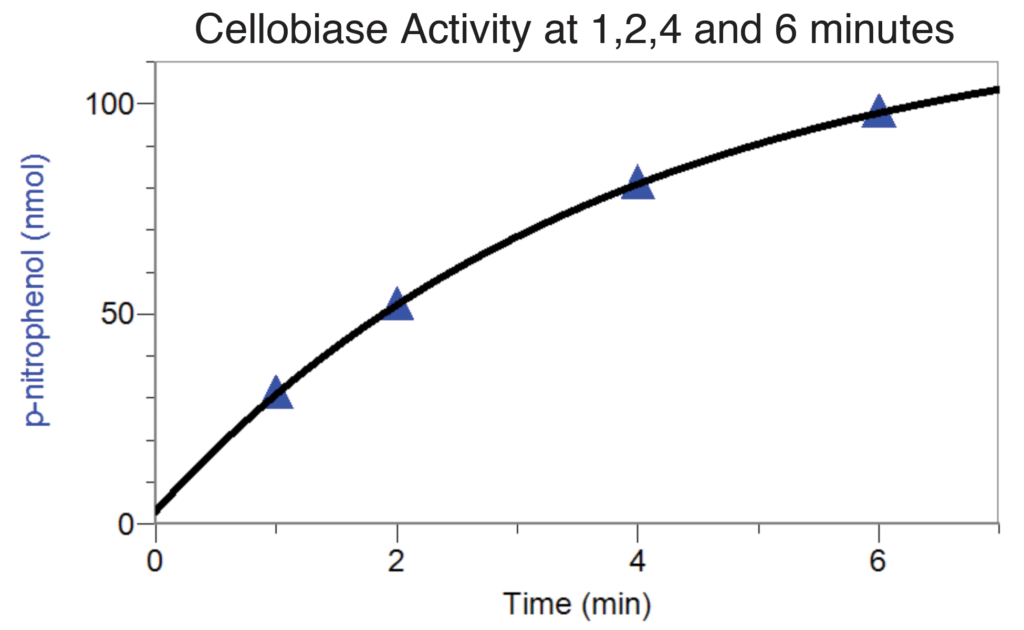Bio-Rad Laboratories has developed an exciting new kit for investigating enzyme action as part of making biofuels that can be used with our SpectroVis Plus spectrophotometer. This is an excellent investigation for AP biology and college biology courses.
The BioFuel Enzyme Kit measures the enzymatic activity of cellobiase. The reaction of the enzyme, cellobiase, breaking down a sugar, cellobiose, is important in the process of making cellulosic ethanol. Cellulosic ethanol is an efficient, more sustainable fuel that could potentially replace petroleum.
The BioFuel Enzyme kit uses a colorimetric assay to measure the activity of cellobiase. In this kit, the sugar (p-nitrophenyl glucopyranoside) is used as a substrate for the cellobiase. The enzyme cleaves the sugar into the compounds p-nitrophenol and glucose. As shown below, p-nitrophenol is a yellow-colored compound with a peak absorbance between 405–410 nm. The rate that p-nitrophenol is produced is a function of enzyme activity.

The kit contains a series of experiments that are perfect for inquiry. As shown in the second graph, students can calculate the conversion rate of the sugar substrate from p-nitrophenyl glucopyranoside to p-nitrophenol and glucose using a known set of standards. The kit also contains instructions on how to determine the ideal conditions (e.g., pH, temperature) for this enzyme. In addition, there is an appendix on quantitative enzyme analysis. This is an excellent resource for the instructor.

Instructions on how to use the SpectroVis Plus spectrophotometer with the BioFuels Enzyme Kit can be found in appendix D of the kit’s instruction manual. You can find more information about Vernier products and other Bio-rad kits in our biotechnology section.
If you have any questions about this exercise please contact our Biology Staff Scientist, John Melville, at jmelville@vernier.com. Biofuel Enzyme Kit (Bio-rad Catalog # 166-5035EDU) sold by Bio-rad laboratories, explorer.bio-rad.com
